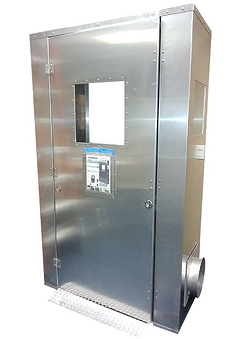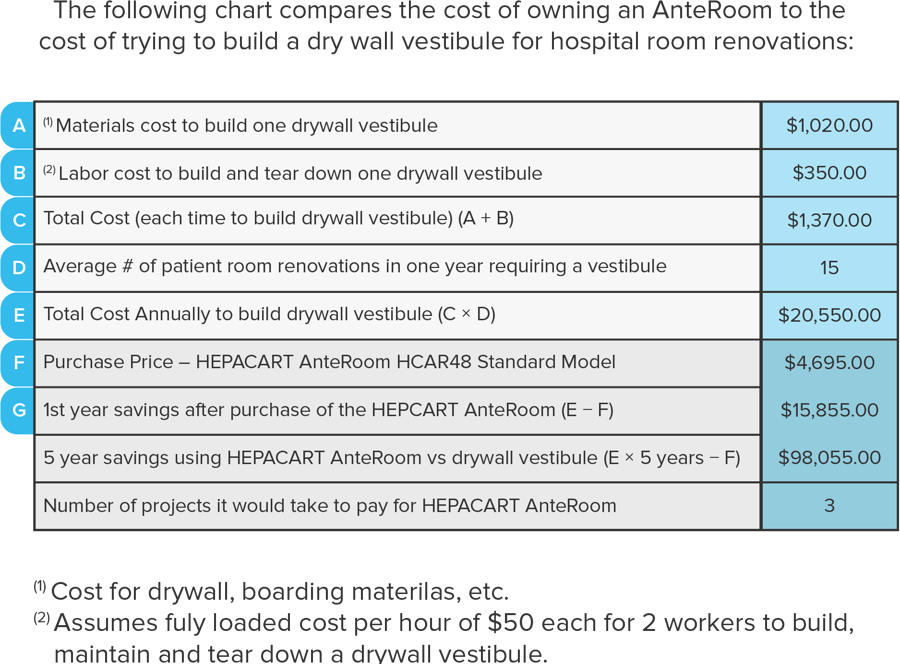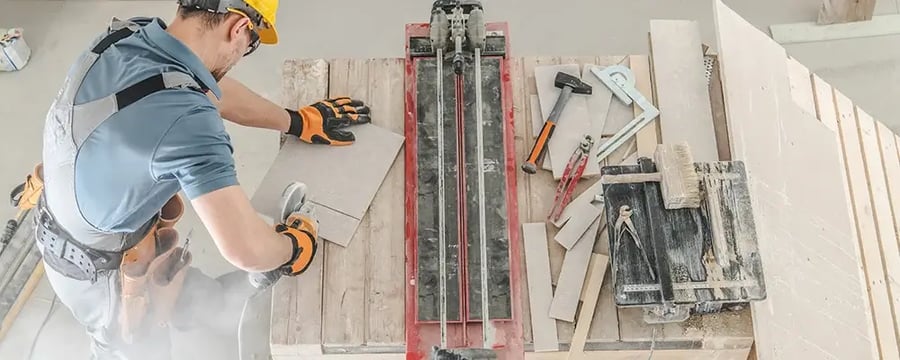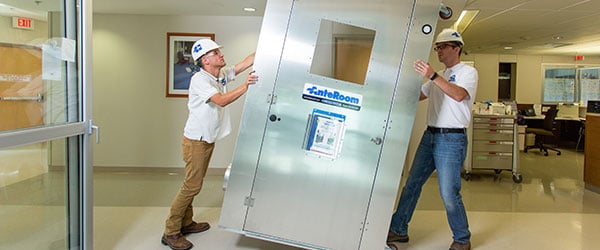Share this
3 Practical Ways to Use Anterooms
by HEPACART on Sep 30, 2020
There are varied uses that facility managers and construction contractors are finding for HEPACART’s AnteRoom.
First used around 1755, “anteroom,” which is defined as a small outer room or waiting room that leads to a larger, more important room, is still with us today.
Not much happened between 1755 and 2010, anteroom-wise. Then in 2011, a small company decided to branch out from its successful line of dust containment carts to something bigger, and the HEPACART® AnteRoom made its debut.
While certainly an anteroom in the general sense, HEPACART's AnteRoom is its own animal: a durable, reusable aluminum module that magnetically seals to a door frame and can be installed in under five minutes for patient isolation or construction dust containment.
Nearly a decade after its introduction, the AnteRoom module is widely used by construction contractors working in healthcare construction at thousands of locations across the country. It's available in several sizes now with numerous options, such as a mobility package and expansion modules, to add height and depth for increased working area.

A common model, the AnteRoom 48, measures about 52 inches wide, 85.5 inches tall, and 24 inches deep (which can be increased with the optional expanders). All models include floor levelers, three windows, flex-hose adaptor, and shut off plate. The hose adaptor provides for connecting a HEPA filter-equipped negative air machine for CDC-level air filtration.
When compared to alternative ways of constructing an anteroom, the AnteRoom can be cost-justified fairly easily. We developed the following ROI chart a few years ago, taking a conservative approach to comparing the cost of an AnteRoom with that of building a drywall vestibule. Executive summary: while building the first one might save a few bucks, by the time you've done one or two more projects, you could have bought an AnteRoom instead and started saving money (while reducing waste) on every project thereafter.
Since AnteRooms last for years, it would be pretty difficult not to get a return on your investment in a relatively short time. This particular calculation says three projects, though some customers have reported fewer.

Let's take a look at the many and varied uses that facility managers and construction contractors find for the AnteRoom. We'll compress them into three broad categories:
- Construction and renovation
- Maintenance and cleaning
- Patient isolation and infection control
1. Construction and renovation
With an AnteRoom installed over the door of a room where there's drilling, sawing, sanding, painting, etc., hospital occupants are protected from pollutants such as dust, various pathogens, mold spores, and solvent vapors. It's a fully self-contained structure with a rigid, boxed aluminum floor.

A negative air machine connected to the AnteRoom via standard 12-inch hose maintains lower pressure in the room by expelling air through a HEPA filter to a space outside the room, ensuring that when the door is opened, room air does not escape into the hallway.
Unlike a simple drywall or plastic sheeting enclosure, a HEPACART® AnteRoom may be equipped with some very useful options in addition to its standard three windows and floor levelers. AnteRooms are commonly fitted with some or all of the following:
- Full electrical package complete with lighting and outlets
- Work order holder to display items such as ICRA permit
- Lock and key set
- Ramps at door sills that allow heavy equipment to be rolled in and out
- Digital pressure monitor to track positive or negative room air pressure
- Mobility kit with wheels for ease of moving to and from jobs
- Reducers to fit 36" doors and expanders for 52" doors (standard is 48")
2. Maintenance and cleaning
Although originally designed as a door isolation unit, an AnteRoom can serve other purposes. For example, with side-wall projects that require greater access than the HEPACART® containment cart can offer, the AnteRoom can be fitted with a foam seal for placement against a wall, providing a 7’ tall x 4’ wide work area (on the 48” model).

With setup taking as little as a minute, the portable, reusable AnteRoom works well for many jobs that take just an hour or two to complete but require containment. By contrast, setting up containment using conventional construction methods often takes more time than it does to perform the actual work.
Infection control during an infectious disease outbreak requires isolation not just of patient rooms, but also cleaning areas. AnteRooms work well to isolate any area so as to protect the rest of the facility from not only dust and infectious pathogens but also harmful vapors from cleaning products.
3. Patient isolation and infection control
The CDC recommends using an anteroom to "further support the appropriate air balance relative to the corridor" and to exhaust contaminated air either outside or through a HEPA filter and away from the protected space.
An AnteRoom can be used during crises (such as the COVID-19 pandemic or possible bioterrorism) to expand the number of isolation rooms in a hospital receiving an overwhelming number of infected patients.
After an AnteRoom quickly converts an ordinary room to an isolation room, staff can use the AnteRoom for various useful tasks:
- Vacuuming or blowing off contaminated clothing
- Changing into and out of PPEs
- Cleaning tools
- Slipping into and out of shoe covers
- Removing debris containers
As a means for emergency preparedness and isolation, the HEPACART® AnteRoom is an economical solution that is easy to implement in any facility type.
Conclusion
Combined with a negative air machine such as the HEPAFORCE® 1100 and a HEPACART UV-FORCE Air Disinfection Module, the reusable AnteRoom is simply the best way to provide both dust containment and infection control, whether the problem is dirty construction or high-risk contagion (or both).
HEPACART AnteRooms set up in minutes, keep patients and staff safe, and save hundreds of dollars in time, labor, and construction waste.
Resources:
- Guidelines for Environmental Infection Control in Healthcare Facilities
- ICRA Matrix
- Guideline for Isolation Precautions: Preventing Transmission of Infectious Agents in Healthcare Settings (2007)

